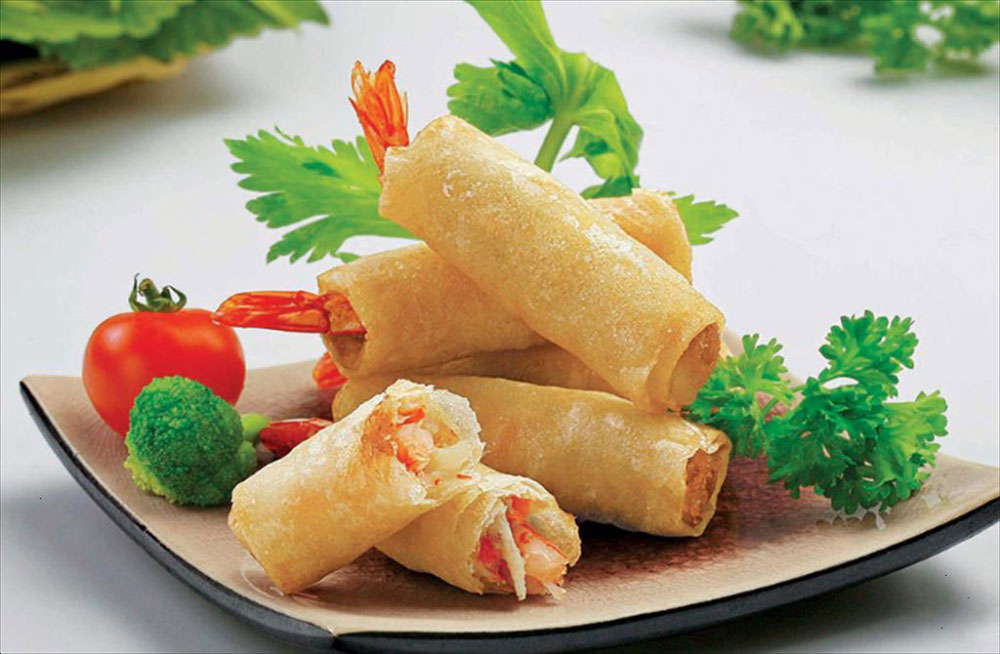Vietnam Seafood
Value-added products – The key for Vietnamese shrimp to break through
Clear signals from major exporting countries
Ecuador, traditionally known for exporting HOSO (head-on, shell-on) shrimp to China, has now accelerated its move into the processed product segment, particularly for the U.S. and EU markets. In June 2025, Ecuador exported a record 126,074 tons of shrimp, up 18% year-on-year. Exports to the U.S. reached 21,388 tons (+44%) and to the EU reached 28,617 tons (+42%).
Beyond volume growth, Ecuador has also strengthened exports of peeled, quick-cleaned, and processed products such as PD, PPV, and HLSO shrimp. The country’s value-added output surged from 127,980 tons in 2020 to 268,720 tons in 2022, doubling in just two years.
India, despite facing heavy U.S. anti-dumping duties (nearly 60%), has maintained positive shrimp export growth to the U.S. in the first seven months of this year. However, the pressure from the U.S. market has pushed Indian exporters to pivot toward the EU, where India is negotiating the removal of import restrictions starting October 2025. If successful, competition in the EU—especially in the ready-to-eat and processed segments—is expected to intensify.
Indonesia, meanwhile, faces significant challenges as 60% of its shrimp exports depend on the U.S. The country’s total exports in 2025 are projected to reach only around 220,000 tons. The newly imposed 19% U.S. tariff could cause a 30% export decline, forcing many expansion plans to halt. Indonesian exporters are now turning to China (which imports nearly 1 million tons per year) and the Middle East, but lower prices are squeezing profit margins.

Consumer demand reshaping the market
On the demand side, the U.S., EU, and China are showing a clear preference for value-added shrimp products.
Europe: Rapid growth in demand—particularly in Southern Europe—driven by younger consumers favoring convenient, ready-to-eat products, along with strict sustainability certification requirements.
China: Still self-sufficient for around 70% of domestic consumption but increasingly importing to diversify. Consumers there enjoy everything from frozen whole shrimp to ready-to-cook or ready-to-eat items.
United States: Continues to increase imports from Ecuador while imposing high tariffs on India, creating indirect opportunities for suppliers with transparent supply chains such as Vietnam.
This consumer shift is putting major pressure on exporters that still rely heavily on raw materials. Countries that invest early in processing capacity, product standardization, and international certifications will gain a competitive edge in the new landscape.
Opportunities and challenges for Vietnam
As a global processing hub, Vietnam faces both opportunities and challenges. Vietnamese shrimp processors have a total capacity of millions of tons per year, capable of supplying a wide range of products—from frozen blocks to cooked, breaded, and retail-packed value-added shrimp. This gives Vietnam a significant advantage in adapting to the ongoing trend.
However, major import markets such as the U.S. and EU are also tightening regulations on food safety and trade fraud prevention, creating new compliance burdens for exporters.
In the first eight months of 2025, Vietnam’s value-added shrimp exports (HS code 16) reached USD 1 billion, up 12% year-on-year, accounting for 34% of total shrimp export value. The main markets for Vietnam’s value-added shrimp include the U.S. (28% share), Japan (18%), and South Korea (8%).
The transition from raw shrimp to value-added products is accelerating rapidly. Ecuador stands as a vivid example, having increased both export volume and processing proportion to expand into the U.S. and EU. India and Indonesia are also being forced to adapt to retain their market shares.
This presents a crucial opportunity for Vietnam. By leveraging its strong processing base, enhancing supply chain transparency, complying with sustainability standards, and investing in product innovation, Vietnam can solidify its position as a global center for value-added shrimp processing.
In an era of fierce competition, the future of the shrimp industry will no longer rely on raw production volume—but on value-added innovation and sustainable branding.
Source: https://seafood.vasep.com.vn/



 Tiếng Việt
Tiếng Việt